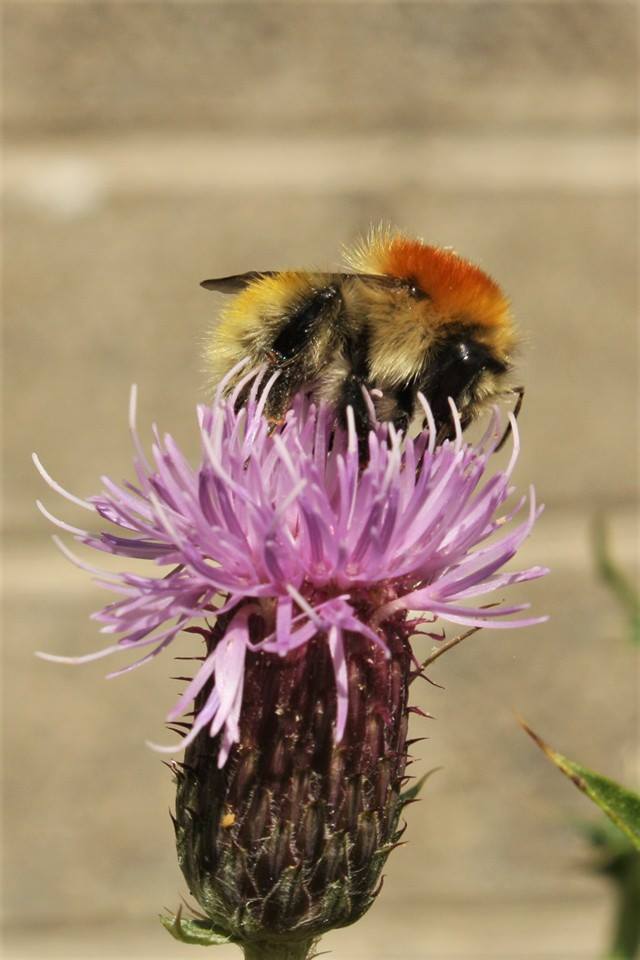 Róisín Dexter, Riverview ETNS
Róisín Dexter, Riverview ETNS
In the midst of the global mass extinction of many animal species we are currently living through, the disappearance of pollinating insects is perhaps the one that most immediately affects human food production. This is because the majority of crops require insects to carry pollen (the male sex cells) from one plant to another in order to produce seeds. No seeds – no food! Therefore we need our pollintors! So how can we bring them back from the brink of extinction?
The All-Ireland Pollinator Plan is inviting all schools to do their part in this crucial work, but in order to help, we first need to know what is causing the problem. Quite simply, pollinating insects, bees, butterflies and hoverflies, do not have as many places to live and food sources, flower nectar and pollen, as they used to. They also being wiped out by the toxic weedkillers that are commonly sprayed in gardens and roadsides and onto most of our food crops. Therefore, all we need to do is provide habitats and food and avoid all toxic sprays – easy, let’s do it!
From our opening in 2016, Riverview ETNS has been a pollinator-friendly school. Here are a few things we have done (or not done!) to support pollinators:
- Rather than mow all of our grass, we allow certain areas to grow wild – it is not just the wildlife that love this, the children do too.
- We do not use chemial weedkillers on the tarmac or concrete areas, but allow weeds (mostly dandelions and ribwort plantain) to grow up through the cracks, providing little oases of food for flying insects.
- We collaborted with the Botany Department in TCD who used our grounds for pollination research. As well as planting more wildflowers in our garden, the researcher engaged with the children about what she was doing and why it was so important, which was a wonderful learning experience for all.
- Last Autumn, we sowed yellow rattle and wildflower seeds in our front garden. Yellow rattle is a parasite, weakening the grass, and thereby allowing wildflowers to come up the following Spring (seed mix available from Wildflowers.ie).
- We installed an outdoor shelter in which the children now change for Forest School, and added a green roof with a mix of grass and wildflowers.
- Our food garden includes companion flowers throughout, to encourage the pollinators to visit our fruit and vegetable flowers. Borage, phacelia and calendulas work well and look beautiful.
As 2020 progresses, we are allowing our tarmac to be invaded by more and more plants, in an effort to maximise wildlife habitats and show that humans can (and must!) live in harmony with plants and animals. We hope that you will feel inspired to rewild your school, and please share your creative ideas!
